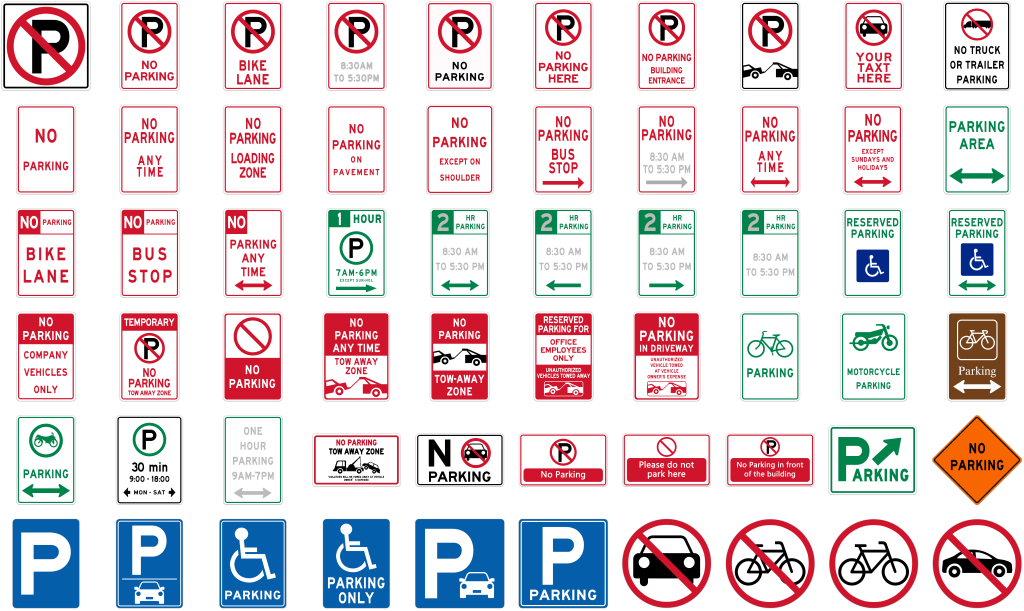Parking Signs

MUTCD parking signs are indispensable tools in regulating and organizing parking spaces. These signs, complying with the standards set by the Manual on Uniform Traffic Control Devices (MUTCD), provide clear instructions, enforce parking regulations, and ensure efficient use of parking areas. With their standardized designs and informative messages, MUTCD parking signs contribute to safer, well-managed parking environments.




























































A1: Parking signs often use symbols and markings to convey specific parking rules. For example, a “P” inside a blue circle indicates general parking spaces, while a red circle with a slash over the letter “P” signifies no parking. Arrows on signs may indicate the direction of parking spaces or specific restrictions.
A2: The duration of parking allowed in a spot will be indicated on the parking sign. Common time restrictions include “1-hour parking,” “2-hour parking,” or “no time limit.” Make sure to check the sign carefully to avoid parking violations.
A3: Yes, some parking signs may have time-specific restrictions. For instance, a sign might indicate “No Parking 7 AM – 6 PM” or “No Parking Monday to Friday, 8 AM – 5 PM.” These restrictions are typically put in place to accommodate traffic flow or other specific needs during certain times.
A4: Loading zones are typically designated for the temporary loading or unloading of goods and may have time restrictions. In most cases, stopping briefly to pick up or drop off passengers is allowed, but parking for an extended period may not be permitted. Always check the signage to understand the specific rules for loading zones.
A5: Arrows on parking signs indicate the direction of the parking spaces or the flow of traffic. They help drivers understand how to position their vehicles within the designated parking area or navigate the parking lot efficiently.
A6: Yes, there are typically designated accessible parking spaces for disabled individuals. These spaces are marked with the International Symbol of Access (a wheelchair symbol) and are reserved for vehicles displaying valid disabled parking permits or license plates. Parking in these spaces without the proper permit can result in penalties.
A7: If a parking sign is faded or unclear, it is generally advisable to seek an alternative parking spot to avoid any potential violations or confusion. If you believe the sign’s visibility is a concern, you may consider reporting it to the relevant authorities responsible for maintaining parking signage in your area.
A8: “No Parking” signs generally indicate that you are not allowed to leave your vehicle unattended, while “No Stopping” signs mean you cannot stop your vehicle, even temporarily. It’s important to understand the specific definitions and regulations regarding parking and stopping in your area.
A9: Yes, parking rules may have exceptions for emergency vehicles and official vehicles such as police cars, ambulances, or government vehicles. These exceptions typically allow them to park in restricted areas temporarily while carrying out their duties. However, unauthorized vehicles should not park in these spaces.